Greetings everybody,
As some of you may be aware, I have been fairly active on different Facebook sewing groups in trying to share The Sewing Machine Newsletter with the wider sewing world. Bernina Lovers, Sew Inspired by Discovery Fabrics, Rag Quilting, Men Who Quilt, and Sew “Manly” have all been particularly accepting of me and I am grateful to all of them.
One of the groups I have found especially interesting is the Tactical Sewing community. There are over 20,000 members in their Facebook group, mostly men, and they are extremely enthusiastic about sewing high-quality tactical gear. The projects they make range from backpacks to pouches, tourniquets to rucksacks, food bowls for dogs, ghillie suits, ammo pouches, basic clothing, and more.
Due to the nature of what they sew—tactical gear— these guys are really particular about the material they use. Go to their page, scroll through their posts for 30 seconds and you’ll see them using unusual material such as:
Berezka fabric
lightweight multicam double sided ripstop
VELCRO® Brand ONE-WRAP® Tape
Korean war vintage 6" canvas webbing
NVISTA CORDURA® TRUELOCK™ Solution Dyed NIR & Berry compliant nylon shock cord
and much, much more.
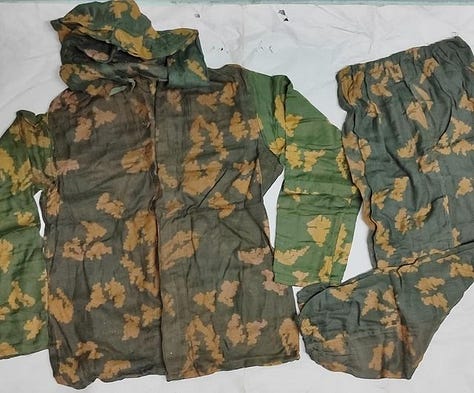

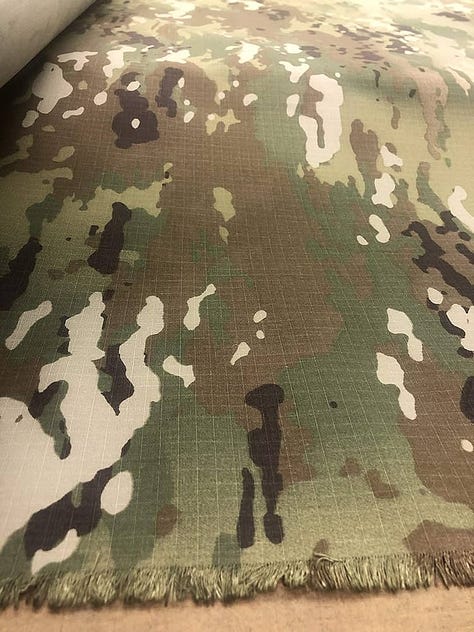
Over the years of working at The Sewing Machine Shop, I have met countless sewists in their 70s and 80s who express genuine concern that sewing is a dying art because younger people do not sew anymore. It is my pleasure to inform them that they are incorrect. The craft of sewing is alive and thriving, and the Tactical Sewing community is an unexpected piece of evidence towards this point.
Recently, I posted on the Tactical Sewing Facebook page and told them that I wanted to put together a Substack article that highlights their community. For anyone who was interested in participating in the article, I asked them to share the following information: (1) the type of gear that you sew, (2) the machine(s) you use, (3) why you started making your own gear, and (4) how you learned to sew.
Below are some of the responses I received:
Tracy Trimble
1) Typical gear is pouch, bags, duffels - 1000d Cordura and a little waxed canvas bags as well.

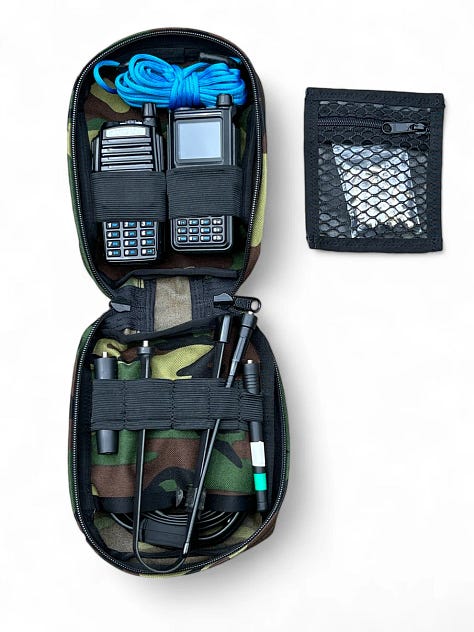
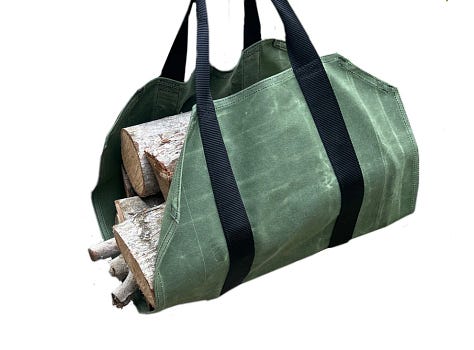
2) Sailrite fabricator - been very good to me and is my main machine. Juki 8700 - been very good to me.
3) Started sewing very small bags to help a friend that runs an outdoor school and a small online store. Realized I liked the product development and just grew from there into KYHandcrafted.com
4) Self taught mostly. My Mom showed me many years ago a few basics as I have always been a DIYer and needed/wanted specific tarp shape(s) for camping. Also, watch YT channels for pointers. Learned a bunch from SOE Gear YT channel with his ‘full builds’ episodes. But mostly trial/error after that until it works out.
Oscar G. Dadula Jr.
I'm self-taught. I used to hang around my friend's shop and saw how they did things. Then, with experimentation and practice, I taught myself how to make my own patterns by hand and how to sew. I first started on a manual machine, then domestic table tops and then finally to an industrial Juki walking foot. I mostly do pouches and backpacks.
I live in the Philippines and top-notch gear is hard to come by and expensive so I decided to make my own. My experience in the field is a big factor in my design.
Photos below are one of Oscar’s projects. The text below is also from Oscar, commenting on this project.
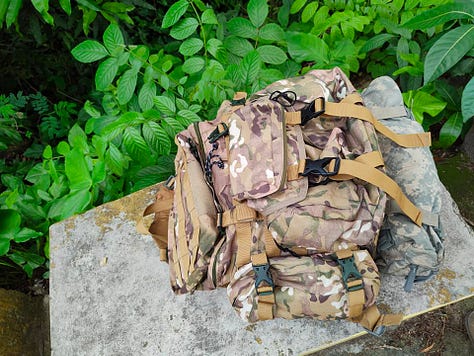
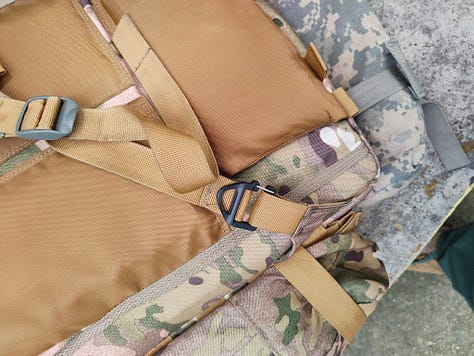
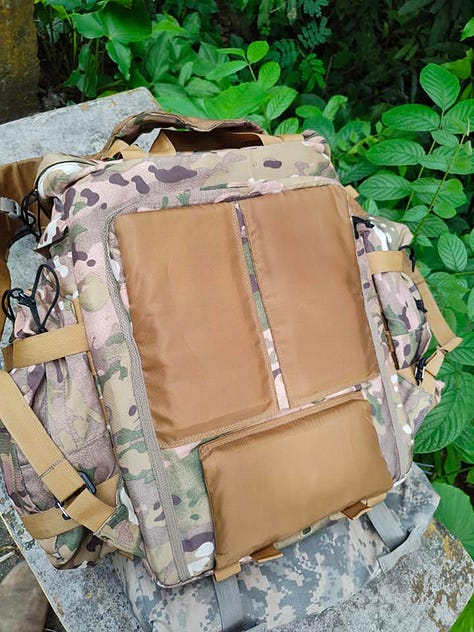
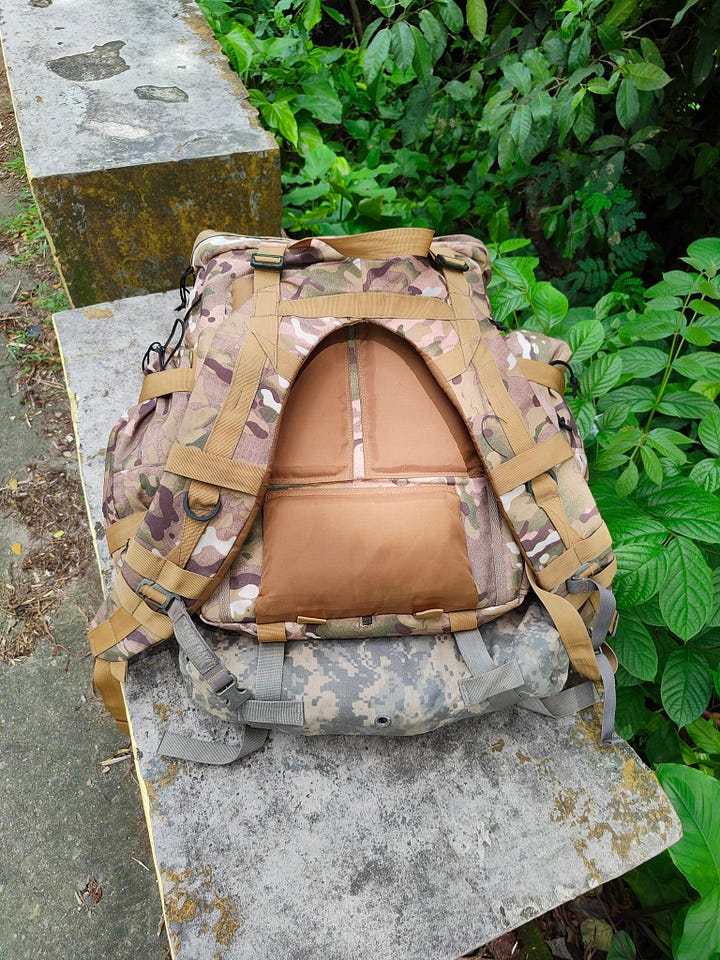
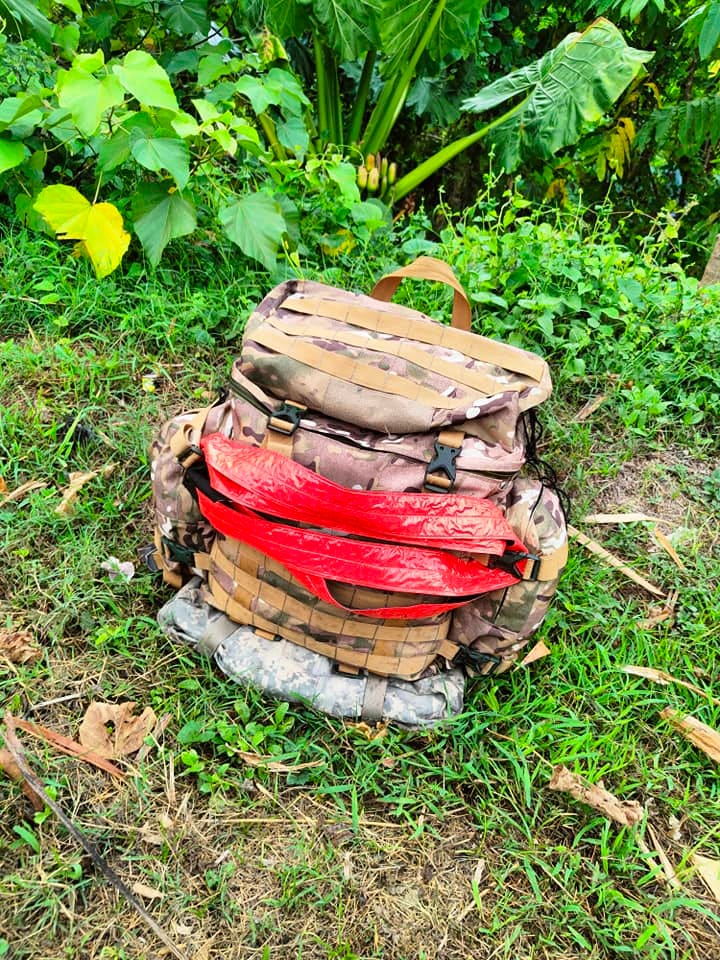
My latest build. It has full-on PALS. I attached two "sustainment pouches" on the sides and one LRRP-type buttpack on the front. On the sides are open type but not really pass through pockets. However, on the buttpack, all pockets are pass through.
Back panel is nylon sheeting. I stay away from mesh if I can help it. It tends to pick-up small/tiny detritus. Also on the back is a zip panel for a bladder.
The yoke I designed to be removable so I can use it on future builds. Saves time, space and energy. The G-hooks are holding up nicely. Though I haven't loaded it more than 30lbs since it's a big-ish day pack.
I live out here in the PI, and with all the tropical greenery, multicam tends stands out.
If you guys are wondering about the black plastic ware. It's what's readily available here. Colored ones are hard to come by and costs twice as much. Nexus? 5 times as much!
Eddie MacIntosh
I sew mostly small pouches and tote bags by hand. I started because I got frustrated with how hard it can be to find the right sizes I needed. Often brands would have fairly large increases between sizes, like going from 20cm to 30cm. By learning to make my own I could make them exactly the sizes I need. This pouch fits my Anker Powercore 3 and various charging cables. I learned the basics of sewing back in school, but then used assorted blogs and tutorials to figure out the rest.
Dakota Hauck
I sew mostly backpacks and pouches, DNU 1541s, I started because I wanted to save money (didn't happen), my wife taught me basics I learned the rest.
Shane Blomberg
1. Historical reproductions, “what-if” alternate history “reproductions”, hand bags, apparel, airsoft gear.
2. Bernina 930 Record, Singer 301A.
3. I started because I play an action sport game called airsoft (same basic concept as Paintball) and felt like the gear on the market was a little too generic. I wanted to try my hand in customizing something to fit my needs. It started with modifying Type 81 Chicoms, and then I went on to make direct replicas of items, or come up with designs which were in the vein of a historical item but with additional changes and mods that made them unique, using period correct techniques and materials. In between I also dabbled in making bags for family and apparel for myself.
4. My grandmother and mother are avid quilters, both machines I use were hand me downs and they have guided me on my path. They have been into sewing since they were young, but I was never really interested until about two years ago, now it is all consuming! YouTube is amazing as I struggle with reading complex instructions with just words and a few small photos. I’ve also learned a ton from cutting up old gear and figuring out how it all goes together. I draft my own patterns in adobe illustrator for any kind of “gear”. For apparel and more common items like hand bags I’ve been following patterns. It is fun to learn techniques and be able to combine them into new projects.


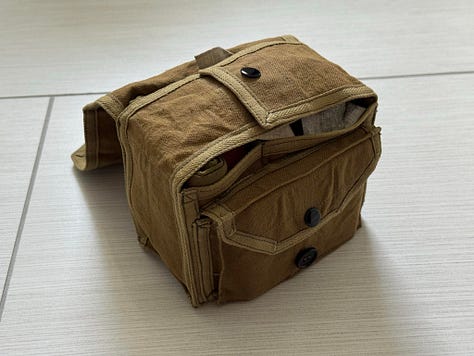


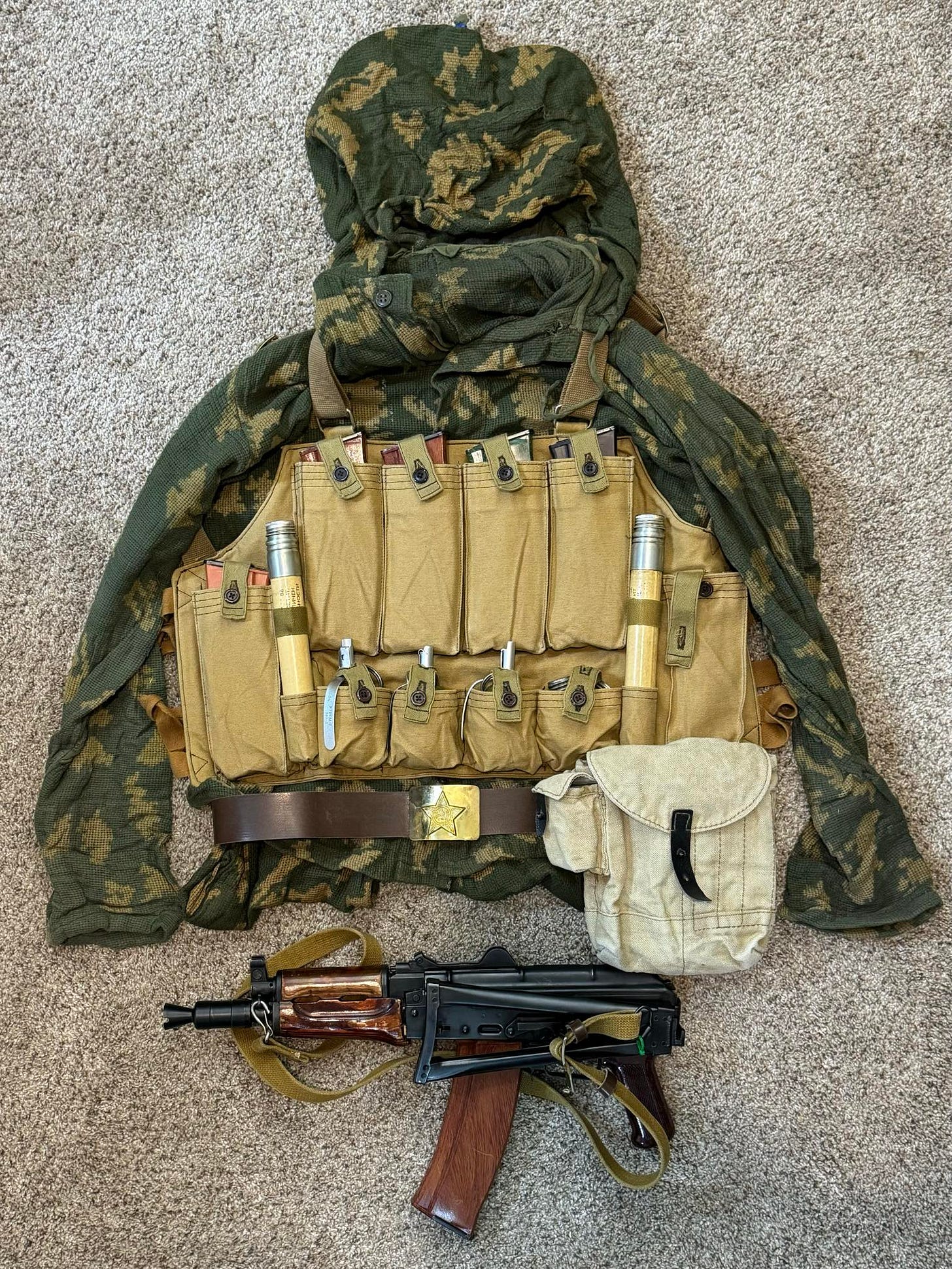
Thank you for reading!
This was one of the more enjoyable article for me to put together. I hope you enjoyed it as well.
If you like this article, please share it with your sewing friends or leave a comment in the comment section. Also, don’t forget to check out the archive of 100+ sewing machine educational articles I’ve published here on Substack.
Thank you,
—Cale




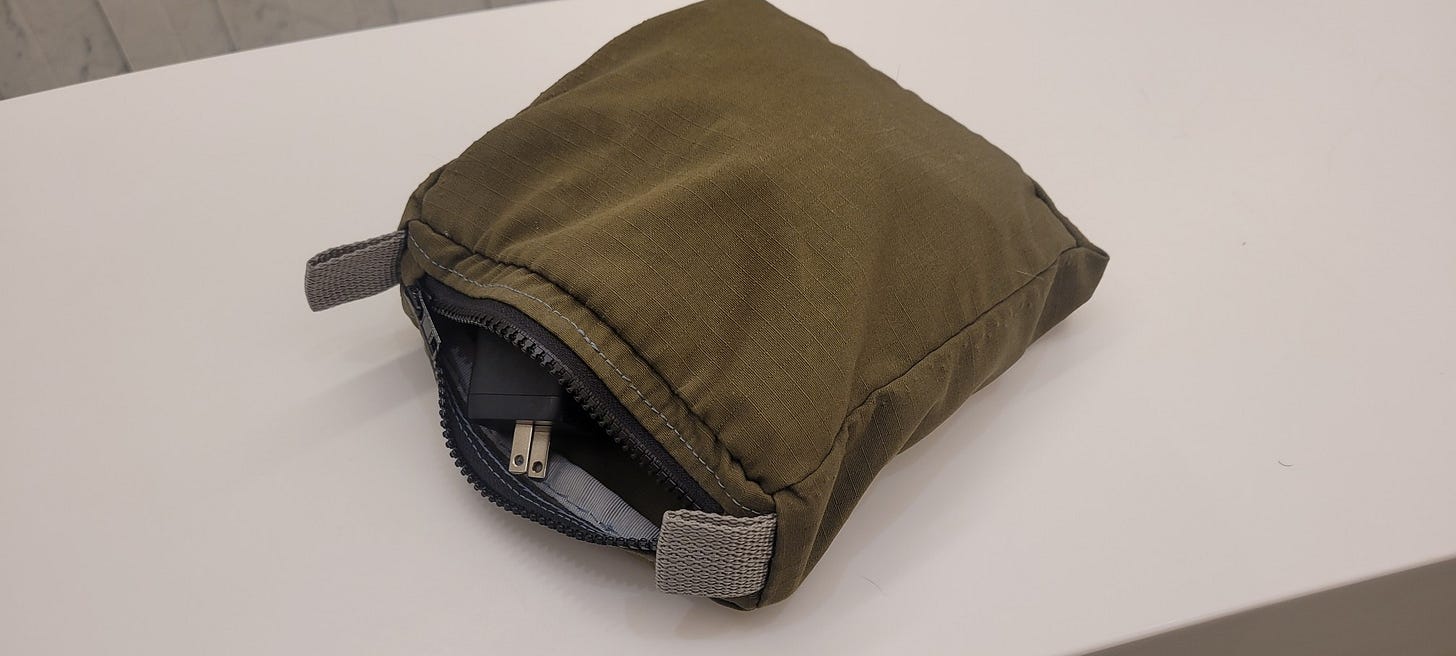


This is fascinating! I’m always interested in people who make stuff, what they make and how. I have a big YouTube library of people sewing stuff I have no interest in making myself, but it’s so cool to see how other people do it. Thank you for sharing their group!
Wow! It is exciting to see anyone become involved in sewing!